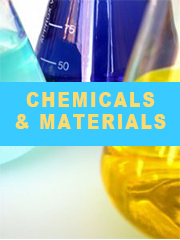TOP CATEGORY: Chemicals & Materials | Life Sciences | Banking & Finance | ICT Media

Download Report PDF Instantly
Report overview
The global Acrylic Acid and Ester market was valued at US$ 10570 million in 2022 and is projected to reach US$ 12630 million by 2029, at a CAGR of 2.6% during the forecast period. The influence of COVID-19 and the Russia-Ukraine War were considered while estimating market sizes.
Acrylic acid is an organic compound with the formula CH2=CHCO2H. It is the simplest unsaturated carboxylic acid, consisting of a vinyl group connected directly to a carboxylic acid terminus. This colorless liquid has a characteristic acrid or tart smell. It is miscible with water, alcohols, ethers, and chloroform.
This report aims to provide a comprehensive presentation of the global market for Acrylic Acid and Ester, with both quantitative and qualitative analysis, to help readers develop business/growth strategies, assess the market competitive situation, analyze their position in the current marketplace, and make informed business decisions regarding Acrylic Acid and Ester. This report contains market size and forecasts of Acrylic Acid and Ester in global, including the following market information:
Global Acrylic Acid and Ester Market Revenue, 2018-2023, 2024-2032, ($ millions)
Global Acrylic Acid and Ester Market Sales, 2018-2023, 2024-2032, (MT)
Global top five Acrylic Acid and Ester companies in 2022 (%)
The global well-known brands in Acrylic Acid and Esters include BASF(16.84%), DOW(12.23%), Nippon Shokubai(8.47%), Akema(6.74%), Formosa(5.23%), LG Chem(5.70%), Mitsubishi Chem(2.79%), Toagosei(0.86%), Sasol(0.67%), Hexion(0.69%), Idemitsu Kosan(0.61%), HUAYI(2.60%), Satellite(7.13%), Basf-YP(3.38%), Sanmu Group(1.73%), Shandong Kaitai(1.28%), CNOOC(1.45%), ChemChina(1.02%), CNPC(1.26%) and Others(19.32%).
The application area of Acrylic Acid and Esters include Coatings Industry, Textile, Oil Exploitation, Pharmacy Industry and Others.
In terms of types, Acrylic Acid and Esters can be divided into Acrylic Acid and Acrylate Esters.
On basis of geography, Acrylic Acid and Esters are manufactured in North America, Europe, China, Taiwan(China), Southeast Asia, South America, Japan, Korea and South Africa.
We surveyed the Acrylic Acid and Ester manufacturers, suppliers, distributors and industry experts on this industry, involving the sales, revenue, demand, price change, product type, recent development and plan, industry trends, drivers, challenges, obstacles, and potential risks.
Total Market by Segment:
Chapter 1: Introduces the definition of Acrylic Acid and Ester, market overview.
Chapter 2: Global Acrylic Acid and Ester market size in revenue and volume.
Chapter 3: Detailed analysis of Acrylic Acid and Ester manufacturers competitive landscape, price, sales and revenue market share, latest development plan, merger, and acquisition information, etc.
Chapter 4: Provides the analysis of various market segments by type, covering the market size and development potential of each market segment, to help readers find the blue ocean market in different market segments.
Chapter 5: Provides the analysis of various market segments by application, covering the market size and development potential of each market segment, to help readers find the blue ocean market in different downstream markets.
Chapter 6: Sales of Acrylic Acid and Ester in regional level and country level. It provides a quantitative analysis of the market size and development potential of each region and its main countries and introduces the market development, future development prospects, market space of each country in the world.
Chapter 7: Provides profiles of key players, introducing the basic situation of the main companies in the market in detail, including product sales, revenue, price, gross margin, product introduction, recent development, etc.
Chapter 8: Global Acrylic Acid and Ester capacity by region & country.
Chapter 9: Introduces the market dynamics, latest developments of the market, the driving factors and restrictive factors of the market, the challenges and risks faced by manufacturers in the industry, and the analysis of relevant policies in the industry.
Chapter 10: Analysis of industrial chain, including the upstream and downstream of the industry.
Chapter 11: The main points and conclusions of the report.